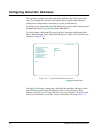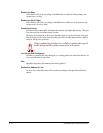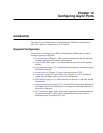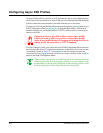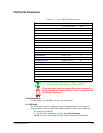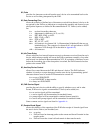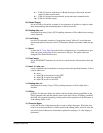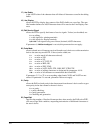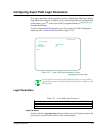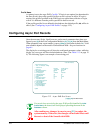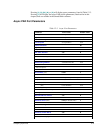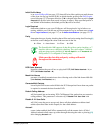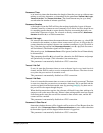
12-6 SmartSwitch 1800 4.0 User Guide, Rev 01
17, Line Delete
is the ASCII value of the character that will delete all characters stored in the editing
buffer.
18, Line Display
allows the DTE to display the contents of the PAD's buffer on a new line. The spec-
ified number defines the ASCII character that will be used as the Line Display char-
acter.
19, Edit Service Signal
allows the DTE to specify the format of service signals. Values (can be added) are:
0
= no editing.
1
= edit signals for printing terminals.
2
= edit signals for display terminals.
8,32–126
= edit signals using one of these (decimal) ASCII characters.
If parameter 6,
PAD Service Signal
, is set to
0
, this parameter does not apply.
20, Echo Mask
allows selected sets of characters received from the user's device to avoid transmission
back to the start-stop mode DTE. Values (can be added) are:
0
= no echo mask (all characters echoed).
1
= no echo of CR.
2
= no echo of LF.
4
= no echo of VT, HT, FF.
8
= no echo of BEL, BS.
16
= no echo of ESC, ENQ.
32
= no echo of ACK, NAK, STX, SOH, EOT, ETB, ETX.
64
= no echo of editing characters as designated by parameters 16-18.
128
= no echo of all characters not mentioned above and DEL.
If parameter 5, 12, or 22 is set to anything other than
0
, X-ON and X-OFF are not
echoed. If parameter 2 is set to
0
, parameter 20 does not apply.
21, Parity
allows the PAD to check parity in the data stream from the user's device and/or to gen-
erate parity in the data stream to the user's device:
0
= no parity.
1
= parity checking.
2
= parity generation.
3
= checking and generation.
22, Page Wait
specifies the number of line feed characters that, when sent by the PAD to the DTE,
will start a Page Wait condition, suspending transmission of additional characters to
the user's device.



